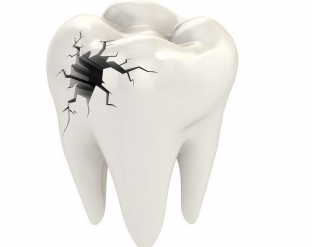The problem of dental caries is relevant in any age category of patients. Most serious diseases of the teeth and oral cavity can be prevented by avoiding the development of caries. It is possible to prevent the development of caries if preventive measures are not neglected, and its further development and subsequent complications can be avoided with the help of early diagnosis of caries. What diagnostic methods are used for early diagnosis of caries? What are the advantages and disadvantages of each caries diagnostic method?
The use of vital staining in the early diagnosis of caries
Earlier detection of carious changes is carried out using new high-tech methods for diagnosing caries. The presence of focal demineralization of enamel in the form of a "chalky spot"; - the first manifestation of the initial caries lesion, which can be seen visually. You can identify this spot at an early stage with the help of vital staining. This method is based on the ability of the diagnostic solution to stain areas of tooth demineralization. The solution consists of a 0.5% solution of basic fuchsin, 1% red solution of acid in propylene glycol, as well as solutions of amylene blue. The vital method for diagnosing caries is affordable and economical, but has its drawbacks, which consist in the inability to assess the depth of caries damage.
Vital staining technique: the tooth surface is thoroughly dried, the solution is applied for 10 seconds, after which the solution is washed off with water. Tissues affected by caries are stained in a bright color. The brightness of the color depends on the degree of damage.
Advantages of optical caries diagnostics
Laser fluorescence is an objective, non-invasive method based on the use of an argon laser that shines through the surface of the tooth. The method is used to diagnose caries in the early stages, as well as to determine the amount of enamel demineralization. In this case, pulsed light waves are created by a laser diode. These waves have a certain length, which, when they hit the tooth, are reflected from its surface due to the optical properties of the enamel, since the demineralization process can change the optical properties of dental tissues. These changes are perceived by a special photocell. Next, the instrument converts the results into digital values, which are displayed and accompanied by an acoustic signal.
Method of Caries Diagnosis by Laser Fluorescence:
- the tooth surface is cleaned of dental deposits and plaque, using a professional paste that does not contain oils and fluorides;
- the surface to be diagnosed is thoroughly dried;
- the area to be examined is illuminated by the instrument's sensor;
- study data is read on the digital display.

Advantages and disadvantages of radiodiagnosis of caries
With the help of a radiograph, it is possible to detect the slightest damage to the tooth by caries, when there are no changes yet on examination. It is important to know that initial dentin lesions and small enamel lesions cannot be distinguished on x-ray due to shadow masking of adjacent intact areas. This feature significantly reduces the diagnostic value of the X-ray method.
In dentistry there is an interest in Cone Beam Computed Tomography. Using this method of diagnosing caries, three-dimensional data are obtained, which are processed by a computer in different planes and formats. Cone beam computed tomography is the most reliable, accurate and objective method, which provides complete information about the state of hard tissues of the tooth.
Thus, there are a lot of methods for early diagnosis of caries in our time. It is important to convey to the population information about the undeniable benefits of regular preventive examinations at the dentist, as well as the need for regular oral hygiene.







Add a comment